In the Footsteps of Lewis and Clark
IN THE FOOTSTEPS OF
LEWIS AND CLARK

Early Commemorations and the Origins of the National Historic Trail

Wallace G. Lewis
UNIVERSITY PRESS OF COLORADO
2010 by the University Press of Colorado
Published by the University Press of Colorado
5589 Arapahoe Avenue, Suite 206C
Boulder, Colorado 80303
All rights reserved
Printed in the United States of America

| The University Press of Colorado is a proud member of the Association of American University Presses. |
The University Press of Colorado is a cooperative publishing enterprise supported, in part, by Adams State College, Colorado State University, Fort Lewis College, Mesa State College, Metropolitan State College of Denver, University of Colorado, University of Northern Colorado, and Western State College of Colorado.
 The paper used in this publication meets the minimum requirements of the American National Standard for Information SciencesPermanence of Paper for Printed Library Materials. ANSI Z39.48-1992
The paper used in this publication meets the minimum requirements of the American National Standard for Information SciencesPermanence of Paper for Printed Library Materials. ANSI Z39.48-1992
Library of Congress Cataloging-in-Publication Data
Lewis, Wallace G., 1943
In the footsteps of Lewis and Clark : early commemorations and the origins of the
national historic trail / Wallace G. Lewis.
p. cm.
Includes bibliographical references and index.
ISBN 978-1-60732-026-5 (hardcover : alk. paper) ISBN 978-1-60732-027-2 (e
book) 1. Lewis and Clark National Historic Trail. 2. Lewis and Clark Expedition
(18041806) I. Title.
F592.7.L7157 2010
917.8042dc22
2010017171
Dust jacket design by Caroline Denney
Text design by Daniel Pratt
19 18 17 16 15 14 13 12 11 10 10 9 8 7 6 5 4 3 2 1
Portions of the introduction and originally appeared as On the Trail: Commemorating the Lewis & Clark Expedition in the Twentieth Century, in Lewis & Clark: Legacies, Memories, and New Perspectives, ed. Kris Fresonke and Mark Spence (Berkeley: University of California Press, 2004).
Portions of originally appeared as Following in Their Footsteps: The Birth and Infancy of the Lewis and Clark National Historic Trail, in Columbia: The Magazine of Northwest History 16, no. 2 (Summer 2002): 3742.
In memory of my father, Glenn C. Lewis 19202009

Illustrations
PHOTOGRAPHS
MAP

Preface
THIS BOOK GREW OUT OF MY FASCINATION with both Lewis and Clark and the history of automobile tourism in the West. The now famous Lewis and Clark trail markers that began to appear along two-lane highways in the late 1960s seem to me emblematic of the way highway motoring and public historical awareness became intertwined in the twentieth century. The account that follows seeks primarily to explore and examine ways the Corps of Discovery was commemorated in the period between its centennial and the creation of the Lewis and Clark National Historic Trail by the U.S. Congress in 1978. As highway travel and tourism developed during that time, the public view of the expedition also shifted from a focus on the explorers and Sacagawea to an emphasis on the routes the Corps of Discovery took between 1803 and 1806. The climax of this narrative is not the Lewis and Clark Bicentennial in the twenty-first century but rather the birth of the Lewis and Clark National Historic Trail in the twentieth century. In tracing various aspects of the process that led to that birth, I examined local newspaper stories that describe commemorative activities and express attitudes toward the history of the expedition. Many of them refer to locally installed monuments, markers, pageants, and similar commemorations, although I have not attempted to discuss or list all such instances.
This should not be regarded as a guidebook to historical sites and monuments. Those described are presented as examples, in no sense exhaustive. Further, the book is not intended to be an administrative or institutional history of the agencies and organizations that have cooperated to make the Lewis and Clark National Historic Trail what it is today, as much as such an account deserves to be told.
Starting with the Lewis and Clark Centennial celebration in Portland, Oregon, concludes the book with a discussion of historical authenticity and conflicting viewpoints on interpretations of the trail and the purposes of commemoration.
I am especially grateful to my wife, Marilyn, for her constant encouragement and support and also for helping me research this book. For close readings of earlier drafts of the manuscript, I am indebted to Darrin Pratt, director of the University Press of Colorado, and to Professor Christine Jespersen at Western State College. For their gracious assistance, I thank Patrick Muckleroy at Western States Savage Library (a master at obtaining interlibrary loans); Keith Peterson, the Idaho Lewis and Clark Bicentennial director; Jennifer Rusk and Chris Mullin at the University of Montanas Mansfield Library Archives; Deborah Knudsen and Donnie Sexton at Montana Travel (Montana Department of Commerce); Peg Owens at the Idaho Department of Commerce; Robben Johnston, archaeologist for the Clearwater National Forest in Idaho; David Nicandri, director of the Washington State Historical Society; Vinola Squires and Bette Hull at the Beaverhead County Museum in Dillon, Montana; Terry Abrams, University of Idaho Library Special Collections; and the staffs of many other libraries and archives, including especially the Montana Historical Society (Helena), Clatsop County Heritage Museum (Astoria, Oregon), Overholser Historical Research Center of the Schwinden Library and Archives (Fort Benton, Montana), University of Wyoming American Heritage Center (Laramie), Idaho Historical Society (Boise), Lewis and Clark Heritage Trail Foundation (Great Falls, Montana), Washington State University Library (Pullman), Three Forks Public Library and Three Forks Headwaters Museum (Montana), and the Nez Perce County Museum (Luna House, Lewiston, Idaho). I am thankful as well for the help and support of Monika Lewis, Jeff Curry, Richard Weholt, and Charlie Knowles.
In the Footsteps of Lewis and Clark


Introduction
THE OFFICIAL OPENING of the national Lewis and Clark Bicentennial in January 2003 ushered in nearly four years of commemorative events and activities that dwarfed all earlier attempts to recognize the expeditions historical significance. The bicentennial celebration represented a variety of purposes with regard to public historical consciousness, including expressing patriotism, maintaining myths of national identity, educating family members through hands-on history, boosting tourism in communities along the expeditions routes, and so forth. For many, it provided an opportunity to enlighten Americans by making their understanding of the past broader and more inclusive.
Next page

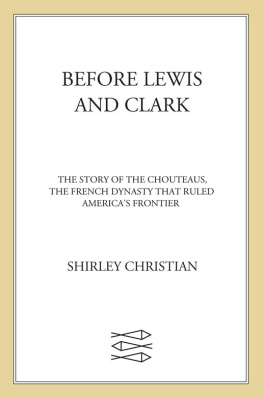

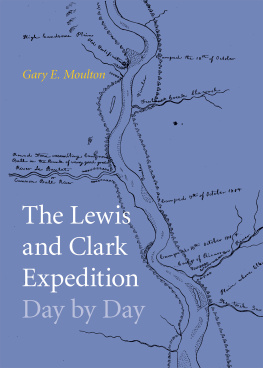
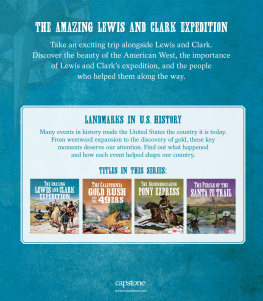
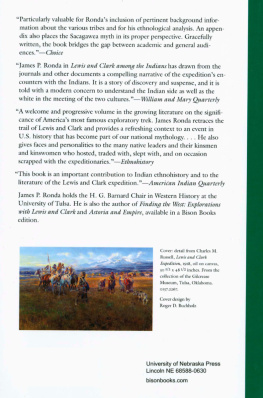

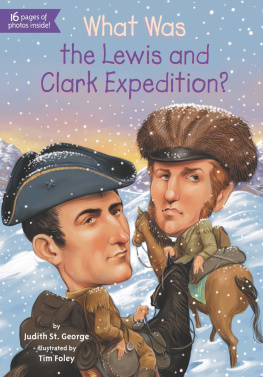
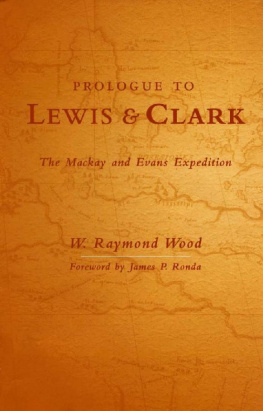
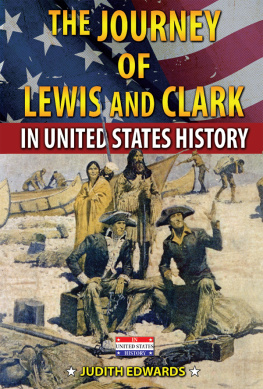



 The paper used in this publication meets the minimum requirements of the American National Standard for Information SciencesPermanence of Paper for Printed Library Materials. ANSI Z39.48-1992
The paper used in this publication meets the minimum requirements of the American National Standard for Information SciencesPermanence of Paper for Printed Library Materials. ANSI Z39.48-1992